Piero della Francesca in Ferrara
Between 1440 and 1449, Piero della Francesca resided at various courts in Italy, including those of Bologna and Ferrara. At the court of the marquis Leonello d’Este (1441-50), the cultured and sophisticated half-brother of Borso d’Este, Piero worked from 1448-49 at the Castle and in the Church of Sant'Andrea (St Andrew), painting frescoes which have now unfortunately been lost.
We know that Piero spent time in Ferrara because of the influence that his art has had on the early Renaissance painting of Ferrara.
Giorgio Vasari maintains that Piero della Francesca painted “many rooms [...] later ruined by the duke Ercole the Elder to modernise the palace” and “a chapel” in the Church of Sant’Agostino (in actual fact the Church of Sant'Andrea), which belonged to the Augustinian community and even at that time was "afflicted by damp".
Why is it so important to remember this church?
During the seignory of the House of Este, the church became one of the most important places of worship in the city. It is the burial place of Biagio Rossetti, Alberto Schiatti, Giovan Battista Aleotti and Giuseppe Mazzuoli (“Il Bastarolo”). A parish church until 1806, it was used as a barracks during the Napoleonic age. After being closed to worshippers in 1866, it was stripped of all the beautiful paintings and furnishings donated over the centuries.
The National Art Gallery in Ferrara is home to a number of artworks taken from the Church of Sant'Andrea, such as the frescoes of the Triumph of St Augustine and St Dorothy the Martyr (circa 1378), attributed to Serafino de' Serafini; the painting known as the CostabiliPolyptych (circa 1513-1525) named after its patron Antonio Costabili, and produced by Benvenuto Tisi da Garofalo and Dosso Dossi. Other exhibits at the Gallery include the detached fresco of the Old and New Testament (1523) by Benvenuto Tisi da Garofalo, originally painted in the refectory of the monastery.
Other important artistic treasures from the church are on display at the Casa Romei Museum. They include a sculpture of St Nicholas of Tolentino, attributed to Alfonso Lombardi, a St Michael the Archangel by Andrea Ferreri, fragments of 13th-century frescoes depicting the Annunciation and the Angel Gabriel with a Saint, and finally two frescoes by an unknown artist of the early 16th-century Ferrara school, depicting St James of the Marches and St Augustine.
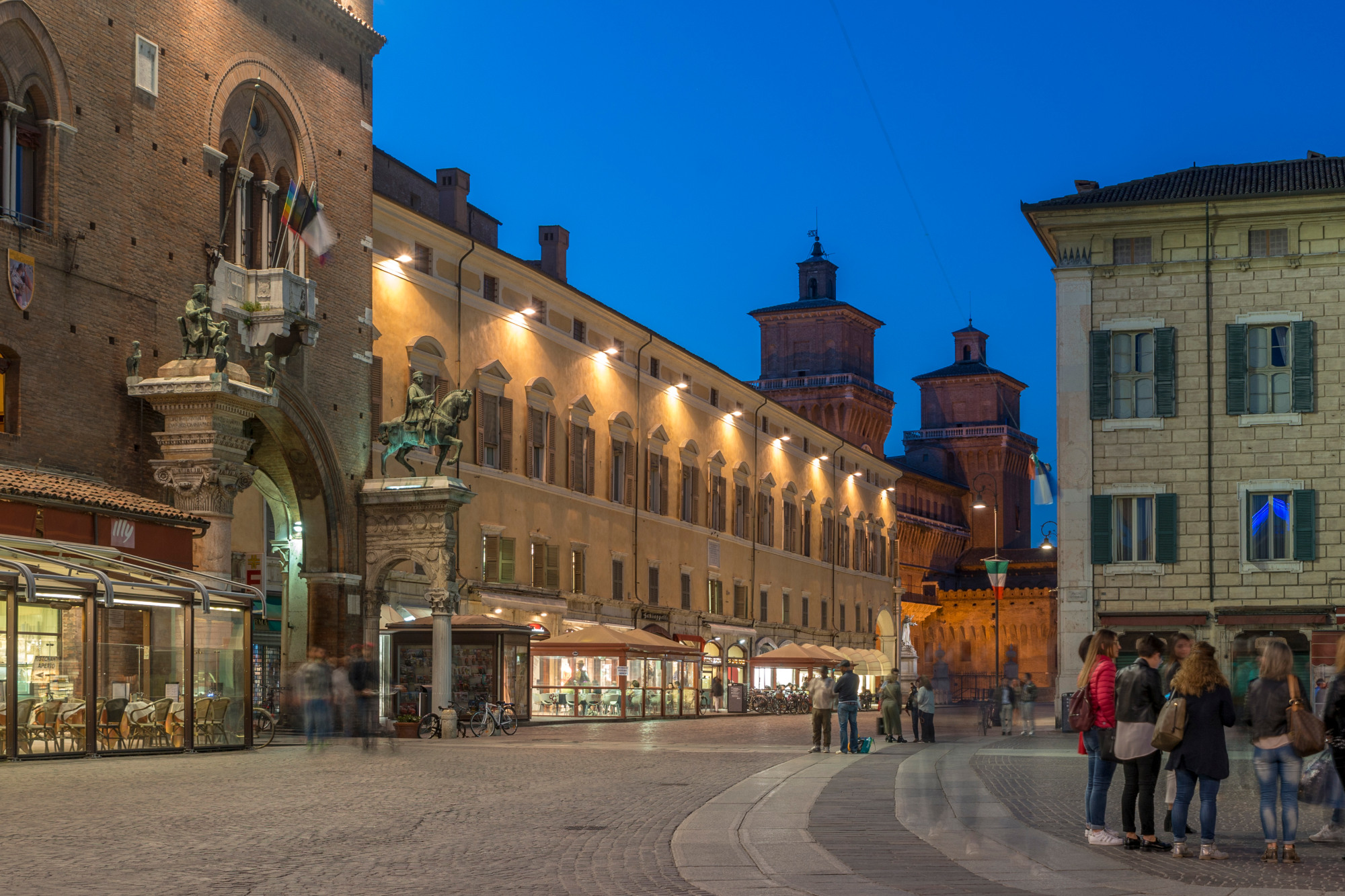
Ferrara, Corso Martiri della Libertà
Leon Battista Alberti in Ferrara
The link between Leon Battista Alberti and the city of Ferrara comes from Prince Leonello, who was lord of the city from 1441-50. As the favourite pupil of Guarino Veronese, it was Leonello more than any other who took an interest in the humanistic culture. Both the treatise Theogenius by Alberti and De equo animante are dedicated to Leonello, and the same prince was also credited with commissioning the idea for Dere aedificatoria. Alberti was certainly involved as a judge in the competition held by the Venetian Collegio dei Savi (Council of Ministers) in 1443, to find an artist to sketch the statue of Niccolò III on horseback (reference to this competition can be found in De equo animante). The judges’ decision fell to the Florentine craftsmen Niccolò Baroncelli (who sculpted the horse on an arched marble base) and Antonio di Cristoforo, who crafted the bronze effigy of the rider. Scholars such as Rosenberg believe it important to consider the theory that the arch may have been designed by Matteo de’ Pasti, a sculptor and miniaturist working in Rimini, who was in service to Alberti and had contact with the House of Este from 1444 onwards in connection with the decoration of a missal (which has now been lost). De’ Pasti is known to have travelled to Ferrara on no fewer than three occasions in 1446, and would have had the opportunity to contribute to the sculpture.
The unusual bronze monument resting on the triumphal arch, named the Arco del Cavallo, was erected in 1451 (according to the epigraph on its capital). The sculptures, together with the statue of Borso, were destroyed during the furious attack by Napoleon’s troops in 1796 and were then restored in the 20th century.
The other architectural work linked to Leon Battista Alberti is the bell tower on the cathedral of Ferrara. Construction began in 1412 and it was eventually finished between 1451 and 1487 (the year of its completion). In particular, in the first order, recent studies by Francesco Ceccarelli not only question the attribution of the Ferrara bell tower to Alberti (the same marble was also used on the Malatestian Temple), but in view of the early chronology (c. 1454), they suggest that it was in fact a prototype.
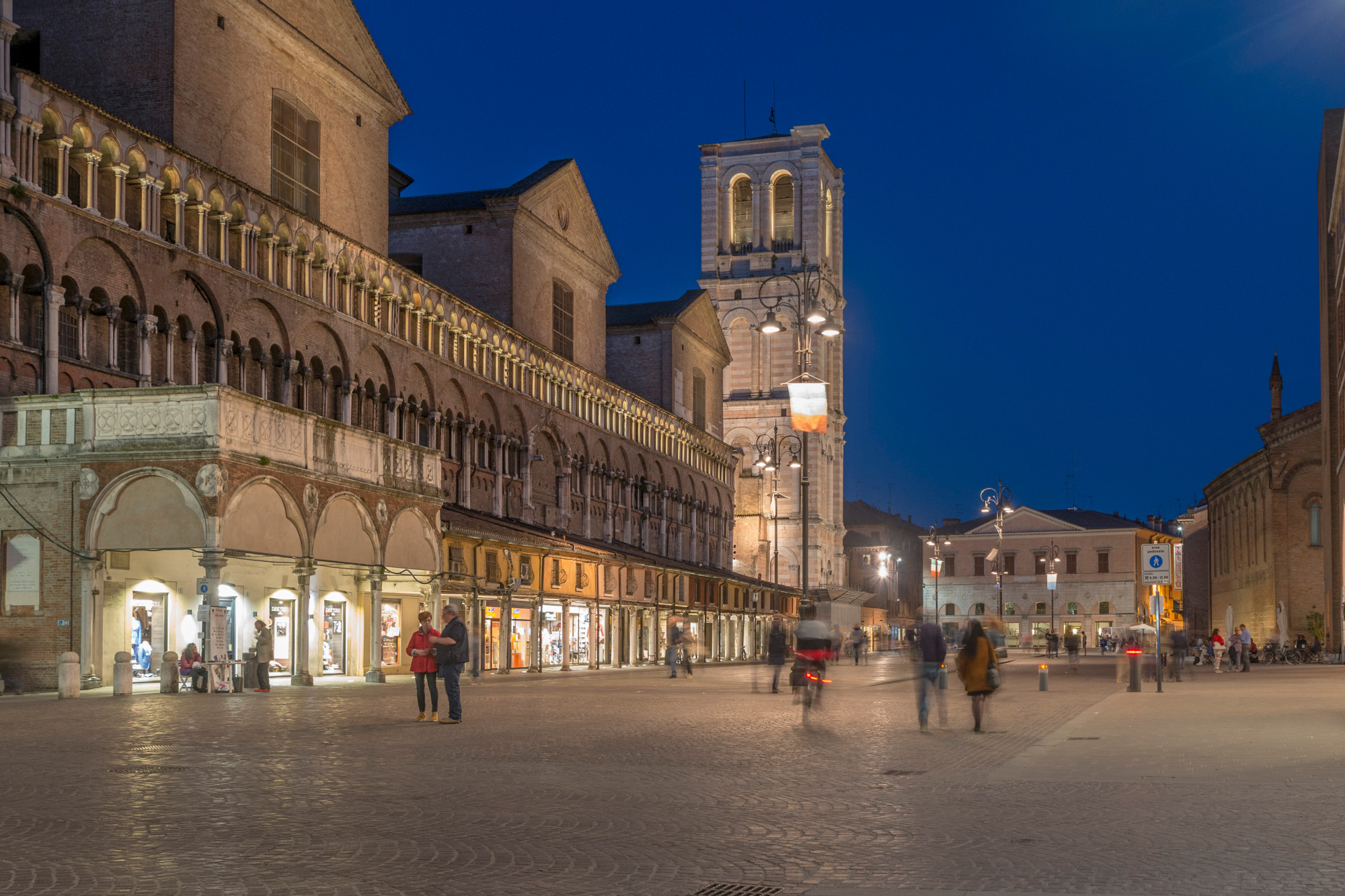
Ferrara, Piazza Trento e Trieste
Piero della Francesca in Rimini
Summoned to Rimini in 1451 by Sigismondo Pandolfo Malatesta, the presence of Piero della Francesca was noted across the whole of the Valmarecchia area around Rimini. Here it is possible to see the valley landscapes that inspired the artist—until 2007, it was thought that he painted the scenery from his imagination. The landscape in question is the Balconies of Montefeltro, a project launched by the local association GAL Montefeltro Sviluppo and the regional government of Emilia-Romagna, led by the landscape artist Carlo Leonardi.
But let’s proceed in order...
Inside the Malatestian Temple in Rimini is a mural painting by Piero della Francesca, dating from 1451 (only part of the inscription is now visible). It depicts Sigismondo Malatesta kneeling before St Sigismund. The fresco was painted on a wall of the Relics Chapel (formerly the sacristy), in an area partially hidden from view and difficult for the public to access. This decision reflected the ‘cleanliness’ and order chosen by Leon Battista Alberti for the interior of the temple, as he preferred sculptural ‘two-tone’ reliefs rather than paintings on walls or canvas.
The work is rich in detail and reflects the renaissance of the time (including the Flemish influence). It has a dual significance, both for Rimini and for Piero.
For the city of Rimini, this was the first authentic Renaissance painting, in a context in which the Gothic style was still very popular; it represents the highest expression of Renaissance art in Central Italy. For Piero, on the other hand, it is the only work of certain date to be found in Emilia Romagna; it attests to his period with the court of the House of Malatesta (some experts claim that Piero worked not only at the court of Rimini but also in Cesena, where he produced The Flagellation, now kept in Urbino, and the St Jerome, now in Berlin).
Taking a closer look at the painting...
The enthroned saint bears the same name as the emperor who, on his return journey from Rome in 1433, conferred the title of knight upon Sigismund. The commissioning of Piero to produce the painting was therefore a tribute to the emperor and also a spiritual tribute to the homonymous saint. At the same time, it is also a courtly, formal method of preserving the commemoration of the lord of Rimini for posterity. The fresco was painted according to the strict formal requirements of the patron and his court, which is why it has been spoken of as a “heraldic fantasy” due to the inclusion of the historic coats-of-arms (of the Malatesta) and of subjects with an overly classical formal rigidity.
Thanks to Montefeltro Art Views, it is possible to rediscover the hidden landscapes of the Montefeltro hills that inspired this Renaissance painter during his long, slow pilgrimage through the Marches, Umbria, Tuscany and Emilia-Romagna. This is precisely the theory put forward by some of the experts who have identified the landscapes that inspired Piero della Francesca.
Below is a list of the Balconies of Romagna:
- Montecopiolo - Monte Palazzolo: Piero Della Francesca, The Nativity
- Montecopiolo - Pugliano: Piero Della Francesca, The Resurrection
- Sant'Agata Feltria - Petrella Guidi: Piero Della Francesca, The Baptism of Christ
- San Leo: Piero Della Francesca, St Jerome and a Supplicant
- Poggio Torriana - Montebello: Piero Della Francesca, Portrait of Battista Sforza
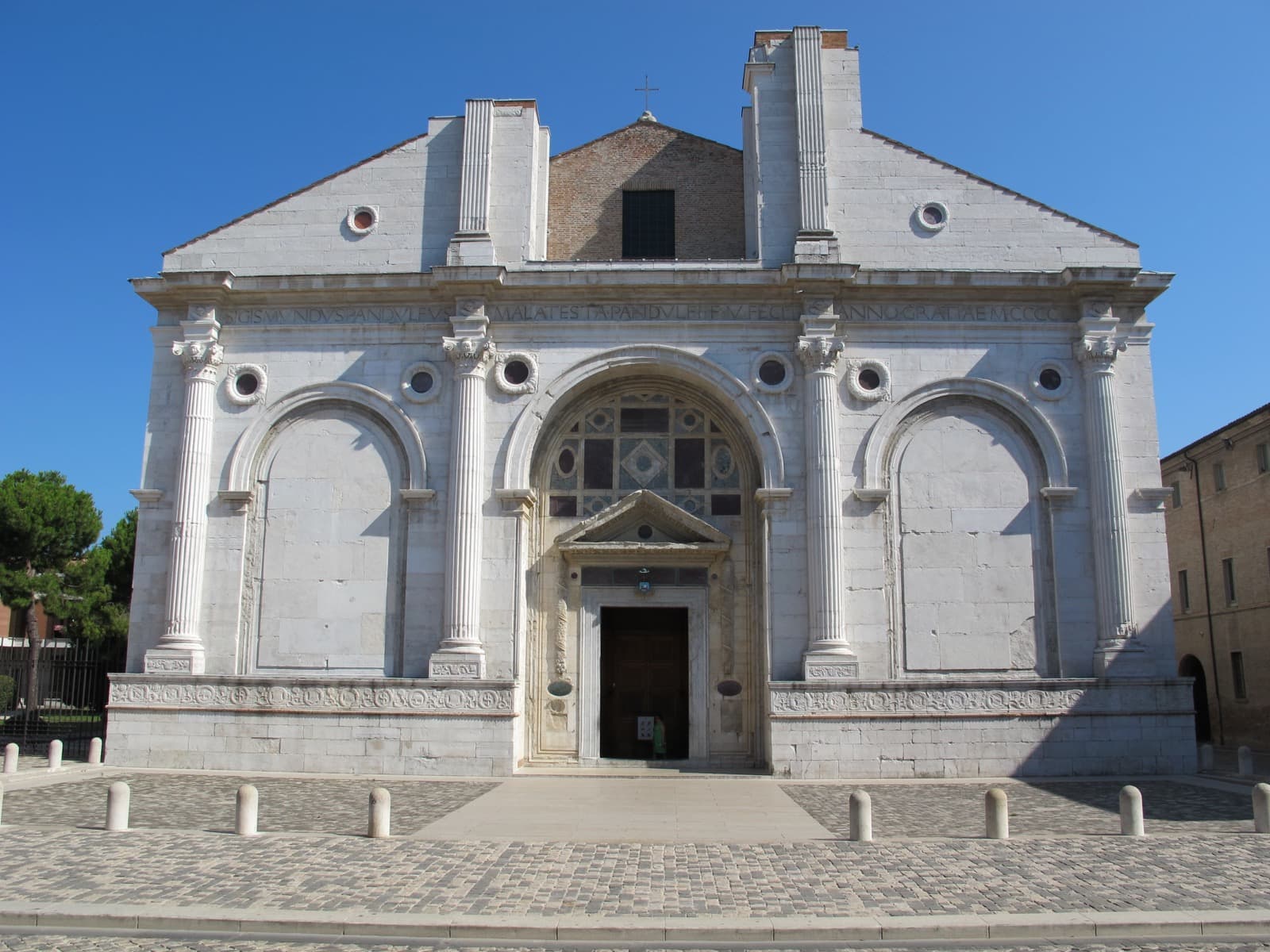
Rimini, Tempio Malatestiano
Leon Battista Alberti in Rimini
“I knew that in Rimini there is a beautiful temple dedicated to a princess named Isotta (Iseult)”.
This is exactly right…
Isotta became the lover of Sigismondo after his wife Polissena Sforza was strangled to death. A few years later, they married, and Isotta became her husband's political advisor. She remained by his side until his early death, following his excommunication by the pope and public accusations of “robbery, fire, carnage, abduction, carnal violence, adultery, incest, patricide, sacrilege, felony and heresy”.
The Malatestian Temple is the ultimate tribute to the couple’s love.
In 1450, at the peak of his fortunes, Sigismondo, lord of Rimini and Fano since 1432, summoned to Rimini the young Leon Battista Alberti to design a classical refurbishment of the Chiesa di San Francesco (Church of St Francis), a Gothic basilica with a single nave and side chapels.
Alberti produced a genial design: the church would be encased in a marble facing inspired by the classical edifices dating from the Roman era, also found in the city.
The triumphal façade of the temple was inspired by the Arco di Augusto (Arch of Augustus , 27 BC), while the side of the building, with a series of deep arches, was based on the Roman aqueduct and on the Ponte di Tiberio (Bridge of Tiberius, 14-21 AD).
The monument was supposed to have been completed with a large dome, copied from the queen of all temples, the Pantheon.
A medallion by Matteo de’ Pasti (c. 1452-53), who worked with Alberti in Rimini, illustrates the design complete with the missing dome. The medallion can be seen at the Rimini Museum.
According to Sigismondo, the temple was intended to be an admirable work of art in the highest style of the Renaissance. Only his death, on 9 October 1468, interrupted this “perfect” plan.
As fate would have it, there was to be no conclusion to a work commissioned to celebrate his love for a woman: the bas-reliefs, of pagan inspiration, would have scandalised the faithful and the Church itself.
These pagan decorations, reminiscent of those on the Ara Pacis in Rome, include an example of the interwoven initials of the lovers and their emblems, floral garlands, fruits, Venus, Diana and the gods of Mount Olympus, together with angelic cherubs. It almost appears a sacrilege, even though the overall vision is of a rare beauty.

Rimini, Tempio Malatestiano - Notturno
Some famous quotes about the Malatestian Temple
“….in this incomparable temple Iseult is immortal, not because of what made her suffer but because of what generated her joy”.
“Julius Caesar and Sigismondo Pandolfo Malatesta live on in Rimini, one of them in the triumphal Arch and the other in the temple, while the living work breathlessly only to die”.
“The exterior of the church is entirely by Alberti. Neither St Francis nor Malatesta are permitted to disturb its solemn and harmonious beauty. The façade is a triumphal arch, a more noble example of the Arch of Augustus spanning the road on the other side of Rimini…” A. Huxley, 1925.
Curiosities about the lord of Rimini, Sigismondo Pandolfo Malatesta
Castel Sismondo in Rimini
Sigismondo began the construction of this building on 20 March 1437, the penultimate Wednesday of Lent, at 6.48 pm. The hour and minute had probably been determined by a horoscope, meticulously cast by the court astrologers. Its ‘official’ conclusion was declared in 1446, a year that proved particularly fortunate for Sigismondo, but in reality work was still ongoing in 1454.
The castle was designed as a palace and fortress in one, a worthy seat for the court and garrison, and also as a sign of power and supremacy over the city.
Sigismondo himself was acclaimed by the court scribes as the architect of the castle, and he himself claims ownership of it in the great marble epigraphs embedded in the walls. If by architect we mean the person who conceived, designed and led the project - a client with clear ideas and well-defined needs - then we can indeed accept this “attribution”. In any event, Sigismondo used the services of professional craftsmen and specialists; there are records of an important consultation (after the construction work had started) with Filippo Brunelleschi, who in 1438 was in Rimini for a couple of months, visiting the principal Malatestian fortresses in Romagna and the Marches.
The structure is rather compelling, with its large square towers and imposing taluses, whose impressive gradient is comparable to that of the pyramids.
The portal facing the city, which comprises a rampart formed of twin ravelins with drawbridges, is decorated with an emblem, comprising the classic shield with chequered bands surmounted by a coat-of-arms bearing a crested elephant, flanked by a four-petalled rose. It is a Pisanello-inspired relief, of good quality, sculpted by an artist believed to be Venetian, as demonstrated by the Gothic-inspired cadence of the figuration.
To the left and right of the crest is the name "Sigismondo Pandolfo" in lower-case Gothic letters, painted tall and in a pictorial style.
Between the coat-of-arms and the marble portal there is a solemn Latin inscription carved in stone (one of the first examples of the “rebirth” of classic lettering).
Sigismondo intended the castle to be a visual representation of a stronghold of power, according to the medieval notion. It had to be built in the traditional way, as demonstrated by the variable perspective of the towers, the compact crenellations, the frequent use of pointed arches and of stone and ceramic inlays, the lavish gilding and the plasterwork painted green and red (the colours of the Malatestian heraldry), as documented by the scribes.
Sigismondo died in his beloved castle on 7 October 1468.
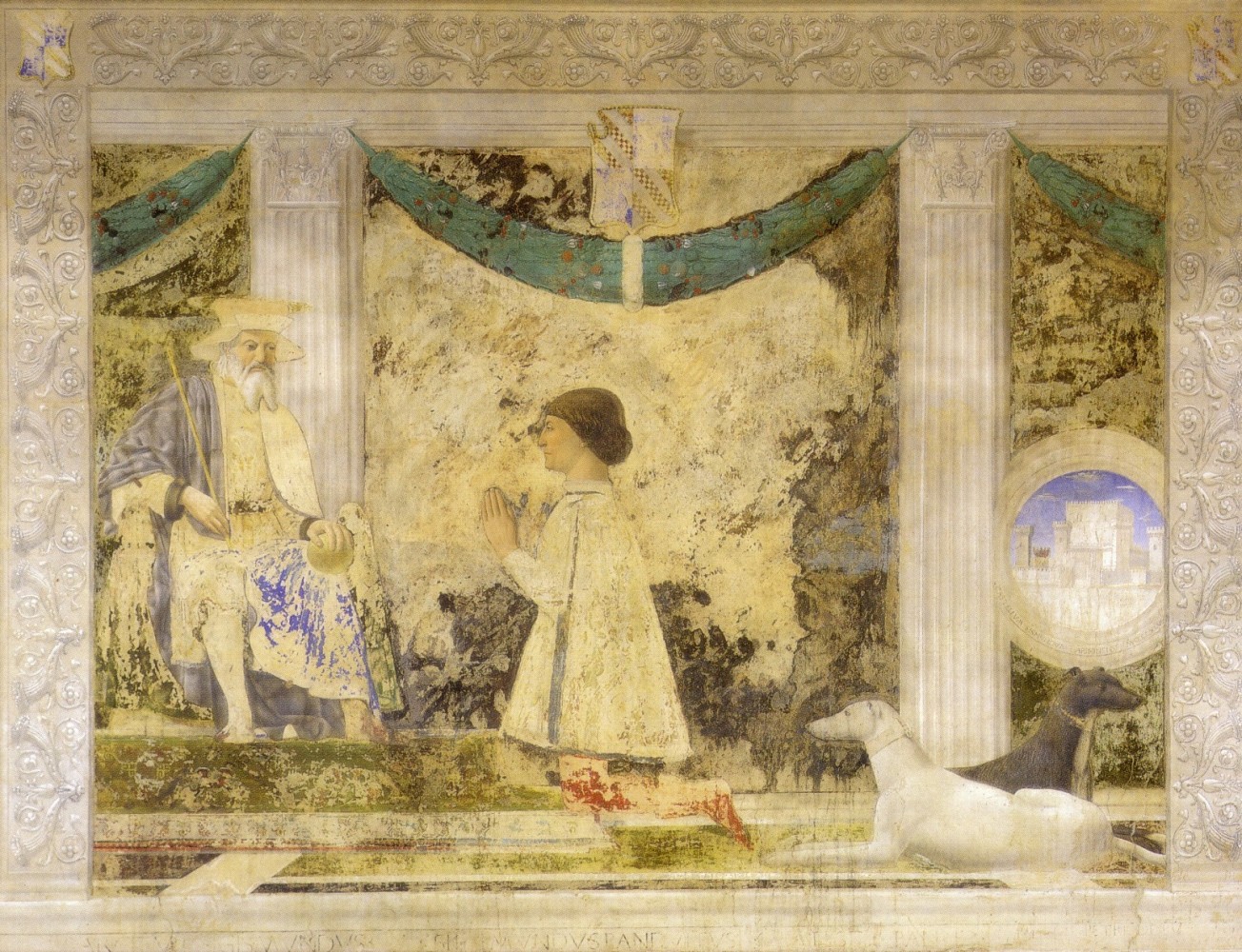
Rimini, Tempio Malatestiano - Sigismondo Pandolfo Malatesta ritratto da Piero della Francesca
Today, the complex of Castel Sismondo, known as the Rocca Malatestiana, comprises four communicating wings: the three-storey Palazzo di Isotta; the central wing on two floors; the spacious great courtyard and the Maschio (Keep), which is the central and most atmospheric part of the entire structure. It has two storeys, connected by a spiral staircase in the larger tower. Overall, including the indoor wings and courtyards, the fortress covers an area of 3300 square metres. This complex building has undergone extensive restoration work by the Fondazione Cassa di Risparmio di Rimini, with the aim of making Castel Sismondo a heritage site open to the public and with scope for cultural and artistic events. In 2017, work began to restore the Corte a Mare (Court on the sea), including the discovery of the perimeter of the ancient moat and curtain wall with the stairway connecting with the new Piazza Arena Francesca from Rimini.
Piazza Malatesta, which faces the castle, has also undergone refurbishment. This complex project builds a dialogue between the Roman-era Rimini and the Renaissance part of the city, by creating a path from the new Galli theatre through the medieval remains as far as the new pedestrian zone at Ponte Tiberio. The 'new' Piazza Malatesta covers an area of 11,000 square metres. After a series of connected projects, in 2021 it became the Piazza dei Sogni of the innovative Fellini Museum, dedicated to Federico Fellini, born in Rimini in 1920. The museum houses a number of exhibits with incredible architectural and symbolic value, forging connections and a creative link between The Fulgor, the legendary cinema immortalised in Amarcord, and the Rocca, which today contains real Fellini film sets created through reconstructions of props and the use of digital technologies and multimedia content. The design of the new Piazza Malatesta is intended to highlight the castle’s importance as a major historic monument while also making space for the Galli theatre as the defining feature of the space and the roads leading from Piazza Cavour and other streets to the Fortress itself.
The Fellini Museum was inaugurated on 19 August 2021
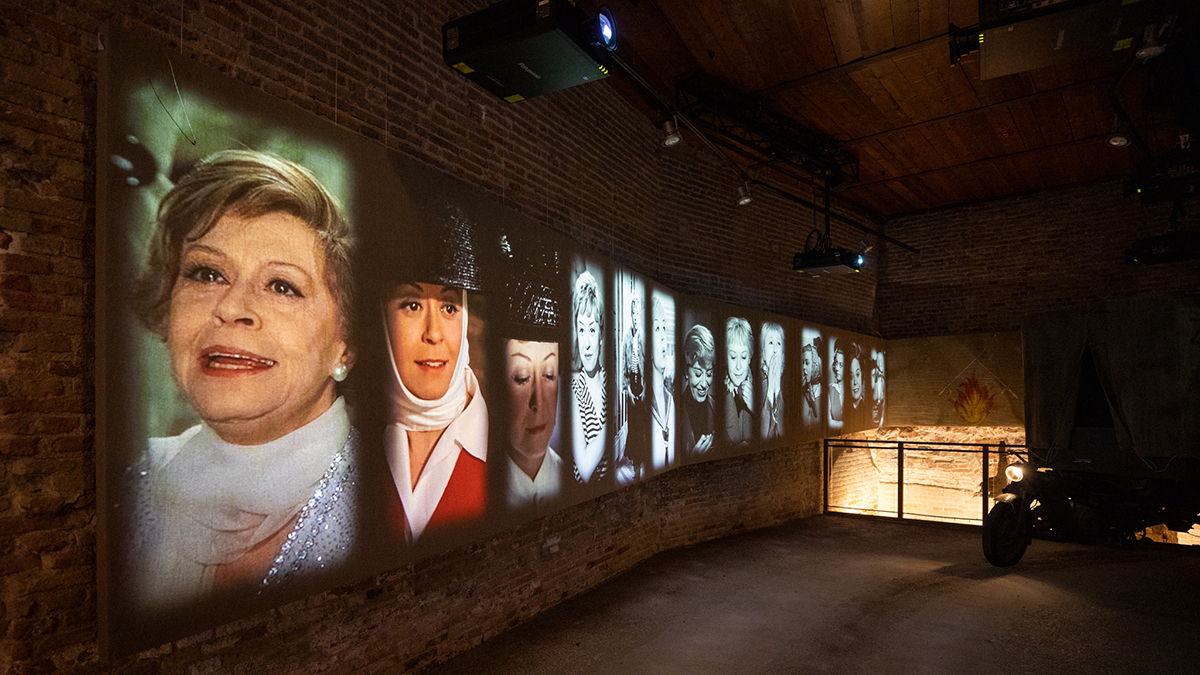
Rimini, Museo Fellini